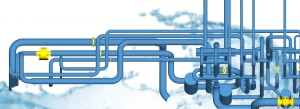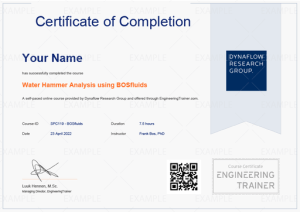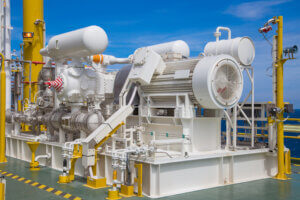
Water Hammer Analysis using BOSfluids
Training Courses Water Hammer Analysis using BOSfluids: Surge Analysis Download Brochure About The Course This course teaches you all the fundamentals of performing water hammer
This course equips engineers with fundamental knowledge of pulsations in piping systems and demonstrates how to assess them according to API 618 and API 674 codes. It is designed for professionals engaged in acoustic and mechanical design for piping related to reciprocating equipment. Participants gain a solid theoretical foundation in pulsation analysis and become adept at conducting code-compliant assessments using BOSpulse.
The course delves into effective mitigation techniques for excessive pressure pulsations, providing detailed guidance on analyzing these mitigations with BOSpulse.
Participants will gain a thorough understanding of dampener configurations, bottles, and other pressure suppression methods using BOSpulse.
Upon completing this course, you will be a confident BOSpulse user with expertise in sound design practices and the analysis of water hammer phenomena in piping systems.
The course is available in multiple formats. For individual learning, you can choose to follow the course online at your own pace. For teams there are also instructor led training course options, which can either be followed online or through a 2-day class-room training.
Welcome & Your instructor
Content Overview
How to use this course
Personal Certificate requirements
Questions Forum
Introduction and Agenda
Potential problems with pressure pulsations
Physical concepts of pressure pulsations
Cyclic unbalanced forces due to pulsations
Pressure pulsations due recipocating equipment
Acoustic Resonance Part 1
Acoustic Resonance Part 2
Pulsation and vibration control
A sample of the first module is available for free, so you can learn more about the teaching style and understand if the course fits your needs.
Introduction and Agenda
Setting up your model in BOSpulse
Using scenarios in BOSpulse
General workflow in BOSpulse
Elements in BOSpulse
Boundary Conditions in BOSpulse
Analyses in BOSpulse
Reviewing results in BOSpulse
Tools an databasis in BOSpulse
3D viewer in BOSpulse
Pressure pulsations due to reciprocating compressors
Computational model of reciprocating compressors
Flow variations due to pressure pulsations
The BOSpulse solver Overview
Steady State solver in BOSpulse
Transient Solver in BOSpulse
Harmonic Solver in BOSpulse
Which solver to use in BOSpulse
Calculation routine for API studies
Adjusting solver settings in BOSpulse
Fluid models in BOSpulse
Acoustic length versus geometric length
Introduction & Agenda Modelling reciprocating systems
Multi-cylinder compressors in BOSpulse
Multi-piston pumps in BOSpulse
Introduction & Agenda
API 618 code guidelines for pulsations from compressors
Pulsation limits as per the API 618
API 674 code guidelines for pulsations from pumps
Running an API 618 analysis in BOSpulse
Running an API674 analysis in BOSpulse
API analysis results in BOSpulse
Pulsation control methodologies
Simple bottles to reduce pulsations
Bottles with choke tubes to reduce pulsations
Gas filled damper (pumps) to reduce pulsations
Orifice plates to reduce pulsations
Introduction & Agenda Pipe stress interaction
Pipe stress interaction with BOSpulse
The structural module in BOSpulse
Exporting shaking forces from BOSpulse
Using the forces in CAESAR II
Structural analysis in BOSpulse
Modeling structures in BOSpulse
Analyzing structures in BOSpulse
Structural analysis results in BOSpulse
How to load PCF files into BOSpulse
Loading ISOtracer models into BOSpulse
Setting up a bottle with choke tubes into BOSpulse
Spherical resonator model into BOSpulse
Viewing model results into BOSpulse
Importing model geometrie in BOSpulse
Exporting models from BOSpulse
Congratulations
Course evaluation survey
Your Personal Certificate
Rate this course
Related resources
Follow up
Self-Paced
This course is self-paced and is not subject to specific dates. The course contains 9 modules with a total of 5 hours of content which can be performed at your own pace. A personal certificate will be provided to you if you finish the course within the first month after purchase. This incentive aims to motivate you to perform the course on time, thereby improving your learning curve.
E-Hybrid
This course is scheduled regularly with a drip feed of modules becoming available to the participants throughout the program. The drip schedule aims to provide consistency to your learning experience and is designed to maintain participant concentration and provide adequate time to perform exercises between live instructor sessions where the instructor may answer any questions about the topic.
This course type is also available for a private schedule for teams of minimum 4 people.
Spring Program:
Fall Program:
Classroom
This course is scheduled over 1 working day. The dates of the course are organized upon inquiry.
This course is available in self-paced, hybrid, and classroom formats.
Prerequisites and level
Intended For
This course is designed for:
Access to the self-paced course
After your purchase is confirmed you receive an account to the EngineeringTrainer online learning portal, where you can find the course in your dashboard. After opening the course you will be guided step-by-step through the different modules. You receive 1-year unlimited access to the course, allowing for the repetition of modules as desired.
Learn by doing
The self-paced and E-hybrid courses are mainly based on video content: video lectures and video software demonstrations. English subtitles are available and videos can be viewed as many times as desired. The video lectures help you to grasp the important technical concepts and in the video demonstrations the instructor uses the software and discusses all the steps and actions. You are recommended to follow the steps of the instructor in the software to optimize your learning curve.
The classroom course is performed in person either on-site or in the Dynaflow Research Group office located in Rijswijk, The Netherlands. This course enables you to be face-to-face with the instructors with live examples provided. This course also provides all participants with a 1-year access to the self-paced course.
Exercises and software models associated with the content are available for download.
Participants of the self-paced and E-hybrid courses receive a personal digital certificate if they meet the following requirements:
Participants of the classroom course receive a personal physical certificate upon the completion of the course.
Example certificate:

After this course, participants are expected to:
Video lectures
Video demonstrations
PDF Exercises
Exercise answers in video-demonstrations
BOSpulse model files for download
The majority of training material are videos. These are not available for download, but can be accessed directly with your account on the portal. Software models associated with the demonstrations are available for download.
You receive 1-year unlimited access to the course. This allows you to perform modules again when you need to refresh knowledge for your work projects.
We encourage participants to submit feedback and questions in the Questions forum of the course. These are answered directly in the forum or form the basis for new videos that are added to the online course.
Participants receive 1-year unlimited access to the course including new videos that are added during this year. Participants receive an email notification upon addition of new course videos.
An active BOSpulse license is required for this course. A 1-month full BOSfluids license can be purchased as an add-on to the course once the course is added to your shopping cart. For more details see the course fee overview below.
Please contact us for questions on this matter.
Yes, this course qualifies for PDH hours as per the NCEES CPC Guidelines.

Training Courses Water Hammer Analysis using BOSfluids: Surge Analysis Download Brochure About The Course This course teaches you all the fundamentals of performing water hammer

Training Courses Pulsations And Vibrations: Reciprocating Compressors Free Course Preview Download Brochure About The Course This course imparts fundamental knowledge of pressure pulsations in piping,

Training Courses How to Review a Pulsation Study Free Course Preview About The Course Pulsation studies can result in quite elaborate and complex reports with
Laan van Oversteen 20
6th floor
2289 CX Rijswijk
The Netherlands
© Dynaflow Research Group BV